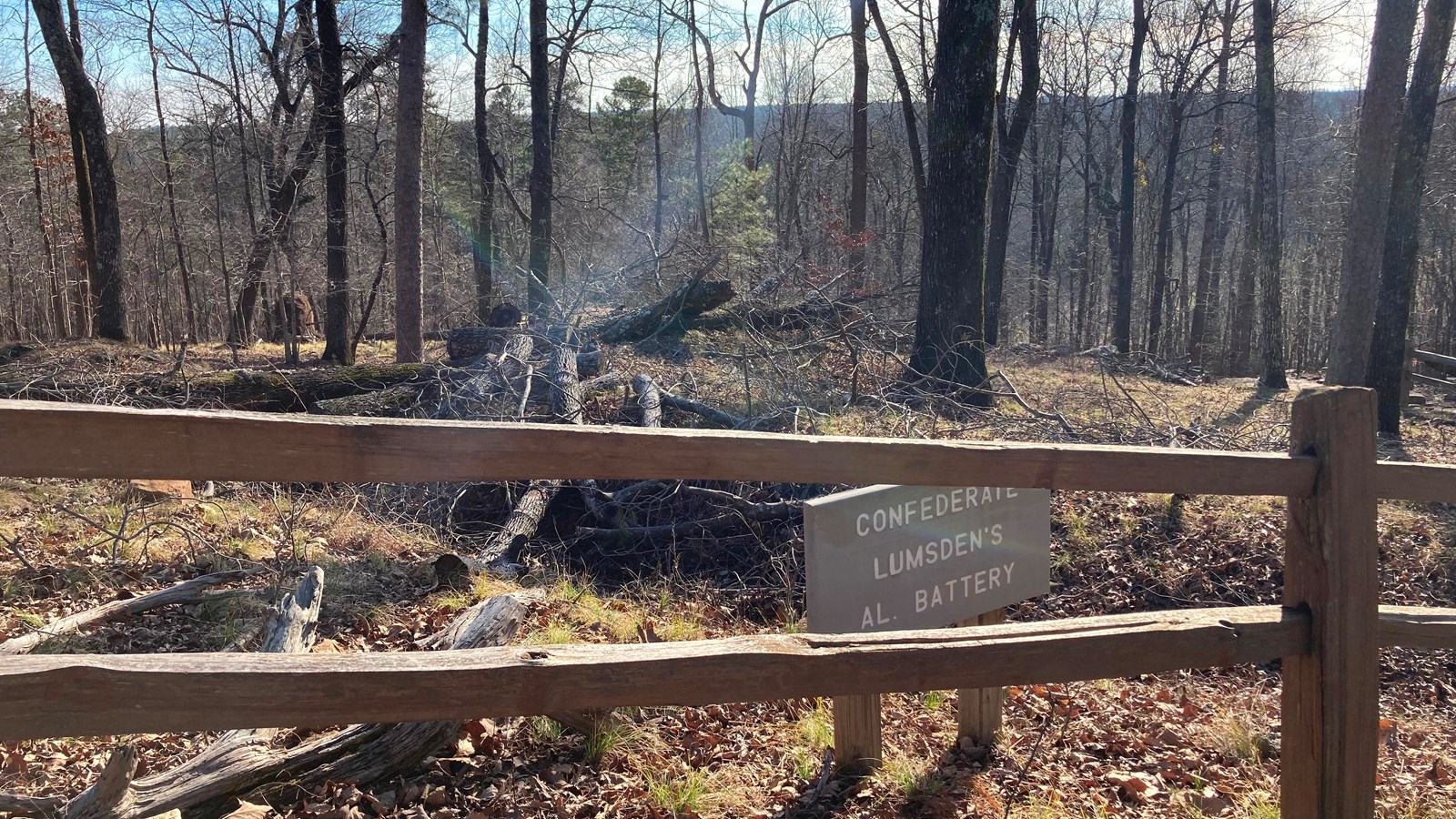Last updated: March 2, 2023
Place
Lumsden's Artillery Battery

NPS Photo
Quick Facts
Location:
Near the peak of Pigeon Hill
Significance:
Confederate artillery position utilized during the Battle of Kennesaw Mountain.
Designation:
National Battlefield Park
Amenities
3 listed
Cellular Signal, Historical/Interpretive Information/Exhibits, Trailhead
This is the position of Captain C.L Lumsden’s Alabama Battery. Thought to have been made up mostly of 12 pound Napoleon cannons, this battery would have had an effective range of up to one mile. Notice the position behind and above the trenches meant for the infantry. This would allow the artillery to shoot over the heads of the soldiers defending the slope at their front. During the Confederate occupation of the Kennesaw Line, Lumsden’s Battery would actually move to this position from the peak of Kennesaw Mountain before the battle. Robert Maxwell, a gunner in this battery, describes a hellish scene from near this spot: “ Fire! All four guns belched at once… Within five minutes, the enemy’s batteries opened on us with all the guns that could be brought to bear on us. Passing over, striking the front of the works, striking the ground in our front, and ricocheting over us, knocking down our embrasures, bursting right above the top of our works.” During this barrage, one of Maxwells’ cannoneers would be decapitated by a Union artillery shell. The shell traveled through the soldier and into the ammunition chest behind the cannon, causing a large explosion. This chaotic scene is thought to be the inspiration for the painting “Thunder On Little Kennesaw” by Don Troiani. The young man who was killed during this engagement was a soldier from Georgia named ‘Gurley’. Maxwell describes him as “a country boy who never under any circumstances showed any excitement” and who “was just as cool and calm as at any other time” in the moments before his death.
